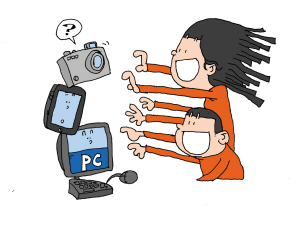In year 2010, there were 32.19 million B2C 3C purchasers in China, which is 32.4% of the total B2C purchasers. 3C product is the category that has achieved fast development over the recent years online. The first reason is that with the help of the internet, they have great comparative advantage in product price, thus some websites that specialize in doing 3C business have achieved big development. And the second reason is that digital products, while their prices are high, are not durable. The new generations come to the market at a fast pace, and the frequency of consumer purchasing has increased, which again promoted the growth of B2C 3C product purchasing (China market research).
 Consumers spend an annual average amount of 2,605 yuan on B2C 3C websites. 39.8% of them spend less than 500 yuan every year. 15% of them spend between 501 and 1,000 yuan. 15.5% spend between 1,001 to 3,000 yuan, and 18% spend between 3,001 and 5,000 yuan. The remaining 11.7% spend 5,000 yuan annually.
Consumers spend an annual average amount of 2,605 yuan on B2C 3C websites. 39.8% of them spend less than 500 yuan every year. 15% of them spend between 501 and 1,000 yuan. 15.5% spend between 1,001 to 3,000 yuan, and 18% spend between 3,001 and 5,000 yuan. The remaining 11.7% spend 5,000 yuan annually.
Dangdang and Amazon, which performed well in the category of books, do not take the lead in 3C market. It is Tmall that still dominates with a market occupancy rate of 21.6%. Next is 360buy, which has 14.8% of all consumers. Apart from these two, 2.5% consumers buy from Newegg, and Amazon and Dangdang only have, respectively, 2.3% and 1.1%. QQshop has 0.9%, and i39shop, which is now the biggest professional mobile phone e-commerce, has 0.1% in B2C category.
360buy tops the list of annual average consumption value per person with 2,954 yuan. Next is Newegg, where on average a person spends 2,793 yuan here. Amazon follows with 2,377 yuan. The annual average consumption per person for Tmall, Dangdang and QQshop are lower—1,894, 1,284 and 365 yuan.
89.9% B2C 3C product purchasers choose to buy 3C products from a single website, and 7.9% choose to buy from two websites. 2.2% choose to buy from three websites or more.
Clothing and books are the other two top products that B2C 3C product purchasers buy. 41.1% have bought clothes and shoes from other B2C websites, and 32.5% have bought books and audio-video products. Also, virtual cards and household electrical appliances are welcomed.
Males, who usually have greater interest in digital products, make up 72.1% of all B2C 3C product purchasers. This ratio is far higher than the overall ratio of 54.5%. Those who are aged between 18 and 30 years old are the most likely to buy 3C products, and they make up 68.2% of all B2C 3C product purchasers.
Those who have received college or university degrees make up 74.7% of the total B2C 3C product purchasers. 19.5% have received high school education, and only 5.8% have received middle school education or lower.
White collar workers make up 40.3% of B2C 3C product purchasers, which is higher than the 35.8% for general B2C purchasers. Students and self-employed staff are 11.9% and 10.9% of the total, lower than the ratios for general B2C purchasers.
Edited by Amy Wang from Daxue Consultant China
Credit Photo: Tianjinwe




